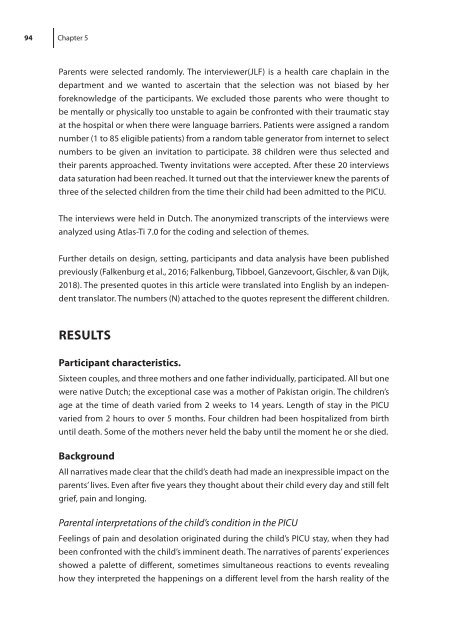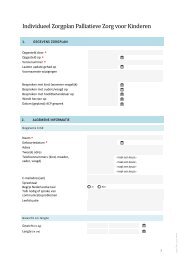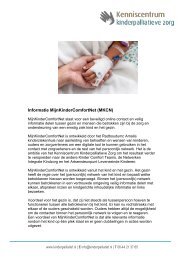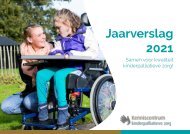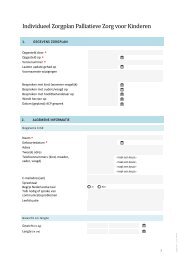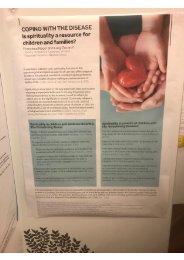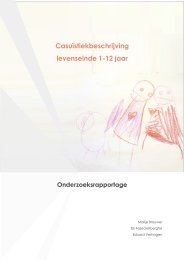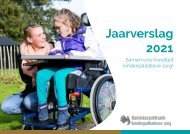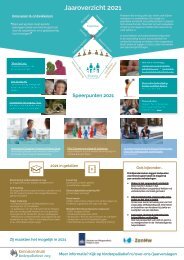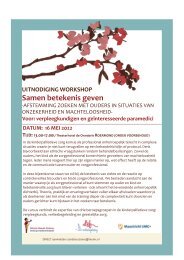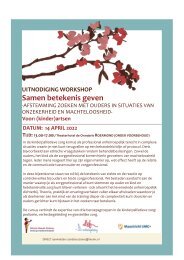Unveiling a fragile spirituality: Experiences of connectedness in pediatric palliative care
You also want an ePaper? Increase the reach of your titles
YUMPU automatically turns print PDFs into web optimized ePapers that Google loves.
94 Chapter 5<br />
Parents were selected randomly. The <strong>in</strong>terviewer(JLF) is a health <strong>care</strong> chapla<strong>in</strong> <strong>in</strong> the<br />
department and we wanted to ascerta<strong>in</strong> that the selection was not biased by her<br />
foreknowledge <strong>of</strong> the participants. We excluded those parents who were thought to<br />
be mentally or physically too unstable to aga<strong>in</strong> be confronted with their traumatic stay<br />
at the hospital or when there were language barriers. Patients were assigned a random<br />
number (1 to 85 eligible patients) from a random table generator from <strong>in</strong>ternet to select<br />
numbers to be given an <strong>in</strong>vitation to participate. 38 children were thus selected and<br />
their parents approached. Twenty <strong>in</strong>vitations were accepted. After these 20 <strong>in</strong>terviews<br />
data saturation had been reached. It turned out that the <strong>in</strong>terviewer knew the parents <strong>of</strong><br />
three <strong>of</strong> the selected children from the time their child had been admitted to the PICU.<br />
The <strong>in</strong>terviews were held <strong>in</strong> Dutch. The anonymized transcripts <strong>of</strong> the <strong>in</strong>terviews were<br />
analyzed us<strong>in</strong>g Atlas-Ti 7.0 for the cod<strong>in</strong>g and selection <strong>of</strong> themes.<br />
Further details on design, sett<strong>in</strong>g, participants and data analysis have been published<br />
previously (Falkenburg et al., 2016; Falkenburg, Tibboel, Ganzevoort, Gischler, & van Dijk,<br />
2018). The presented quotes <strong>in</strong> this article were translated <strong>in</strong>to English by an <strong>in</strong>dependent<br />
translator. The numbers (N) attached to the quotes represent the different children.<br />
RESULTS<br />
Participant characteristics.<br />
Sixteen couples, and three mothers and one father <strong>in</strong>dividually, participated. All but one<br />
were native Dutch; the exceptional case was a mother <strong>of</strong> Pakistan orig<strong>in</strong>. The children’s<br />
age at the time <strong>of</strong> death varied from 2 weeks to 14 years. Length <strong>of</strong> stay <strong>in</strong> the PICU<br />
varied from 2 hours to over 5 months. Four children had been hospitalized from birth<br />
until death. Some <strong>of</strong> the mothers never held the baby until the moment he or she died.<br />
Background<br />
All narratives made clear that the child’s death had made an <strong>in</strong>expressible impact on the<br />
parents’ lives. Even after five years they thought about their child every day and still felt<br />
grief, pa<strong>in</strong> and long<strong>in</strong>g.<br />
Parental <strong>in</strong>terpretations <strong>of</strong> the child’s condition <strong>in</strong> the PICU<br />
Feel<strong>in</strong>gs <strong>of</strong> pa<strong>in</strong> and desolation orig<strong>in</strong>ated dur<strong>in</strong>g the child’s PICU stay, when they had<br />
been confronted with the child’s imm<strong>in</strong>ent death. The narratives <strong>of</strong> parents’ experiences<br />
showed a palette <strong>of</strong> different, sometimes simultaneous reactions to events reveal<strong>in</strong>g<br />
how they <strong>in</strong>terpreted the happen<strong>in</strong>gs on a different level from the harsh reality <strong>of</strong> the


